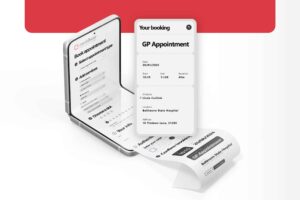Every workplace, no matter how safe it seems, harbours unseen risks that can compromise the health and wellbeing of employees. According to the International Labour Organisation, over 3 million people die each year due to work-related accidents or illnesses, many of which could have been prevented with proactive risk assessments. That’s more than 8,000 lives lost daily, often from hazards that remained undiscovered until it was too late.
These dangers aren’t limited to high-risk industries like construction or manufacturing. Offices, clinics, and retail spaces also conceal threats, from poor ergonomics and air quality to escalating mental health challenges. In many cases, the absence of a thorough health risk assessment allows these dangers to fester, quietly undermining employee safety, productivity, and even company reputation.
But it doesn’t have to be this way. A well-executed workplace health risk assessment acts as both a magnifying glass and a safety net—helping organisations identify potential threats before they escalate into crises. True leadership in workplace safety lies in building a culture that values proactive care over reactive fixes. By taking deliberate steps to assess risks and implement meaningful changes, businesses can transform hidden dangers into opportunities for growth and resilience.
What is a Workplace Health Risk Assessment?
A workplace health risk assessment is a systematic process that identifies potential hazards within a work environment, evaluates the risks they pose, and determines how to control or eliminate them. It is a critical step in protecting employee wellbeing and ensuring compliance with health and safety regulations.
At its core, the process aims to answer three questions: What could go wrong? How severe could the impact be? And what measures can prevent harm? When businesses address these questions, they can anticipate and mitigate dangers before they affect workers.
The impact of these assessments also bring measurable financial benefits. According to OSHA, implementing injury and illness prevention programmes can reduce workplace injuries by 15 to 35 percent. For employers without existing health and safety programmes, this reduction could save between $9 billion and $23 billion annually in employee compensation costs, depending on the programme’s effectiveness.
Common risks vary by industry but often include ergonomic issues like poorly designed workstations, chemical exposure in manufacturing settings, and mental health challenges such as stress and burnout. These assessments provide a roadmap for creating safer workplaces, whether by adjusting equipment, providing protective gear, or fostering a culture that prioritises psychological health alongside physical safety.
Steps in Conducting a Workplace Health Risk Assessment
An effective workplace health risk assessment can seem daunting, but breaking it into manageable steps ensures it becomes a practical, impactful process. These four key steps provide a clear roadmap to identify risks, address them, and foster a safer environment for everyone.
Step 1: Identify Hazards
The first step is recognising the threats that may compromise employee health and safety. Hazards exist in various forms:
- Physical: Slippery floors, noise, or poorly maintained equipment.
- Chemical: Exposure to hazardous substances, such as cleaning agents or industrial solvents.
- Biological: Risks from pathogens in healthcare or food processing settings.
- Ergonomic: Improper workstation setups leading to musculoskeletal strain.
- Psychosocial: Stress, harassment, or excessive workloads that impact mental wellbeing.
Every workplace faces different challenges, so tailoring this process to specific industries is important. For instance, construction sites must account for fall hazards and heavy machinery, while corporate offices should address ergonomic setups and mental health considerations.
Step 2: Assess Risks
After identifying hazards, the next step is understanding the risks they pose. This involves evaluating two key factors:
- Likelihood: How likely is the hazard to occur?
- Severity: What is the potential impact if it does occur?
Using tools like risk matrices can simplify this process. A risk matrix maps likelihood and severity to assign a risk level (low, medium, or high), helping teams prioritise which issues to address first. For example, a chemical spill in a manufacturing plant with frequent handling of hazardous materials might score high on both scales, requiring immediate action.
Step 3: Implement Controls
Addressing risks effectively means selecting the right control measures. The control hierarchy offers a structured approach:
- Elimination: Remove the hazard entirely.
- Substitution: Replace a hazardous process or material with a safer alternative.
- Engineering Controls: Design solutions that reduce exposure, like ventilation systems.
- Administrative Controls: Establish policies, procedures, and training to mitigate risks.
- Personal Protective Equipment (PPE): Provide gear like gloves or helmets as a last line of defence.
For instance, in a lab setting, a fume hood (engineering control) might minimise chemical exposure, while detailed safety protocols (administrative control) ensure proper handling.
Step 4: Monitor and Review Regularly
A health risk assessment isn’t a one-time effort. Regular monitoring ensures the controls remain effective and adapt to workplace changes. Whether introducing new equipment or expanding operations, ongoing reviews are crucial.
Modern tools, such as risk assessment software, streamline this process by automating hazard tracking and updates, making it easier to maintain compliance and safeguard employees.
Make Your Workplace Health Risk Assessments Impactful
While conducting workplace health risk assessments is a critical step towards ensuring safety, compliance, and employee wellbeing, its true value lies not in the reports generated but in the actions that follow. Identifying risks is only half the equation; implementing and monitoring the right remedial measures is where real change happens.
While paper-based or manual methods can serve as a starting point, they fall short when it comes to sustainability and long-term impact. Managing a growing list of hazards and tracking progress becomes cumbersome, prone to errors, and nearly impossible to monitor effectively. Important tasks—such as following up on corrective actions or ensuring consistent updates—often slip through the cracks.
Moreover, regulatory compliance is a moving target. Local and industry-specific regulations, such as OSHA in the United States or HSE in the UK, require meticulous adherence. Without the right tools, maintaining compliance can feel like navigating a maze. Modern risk assessment tools simplify this process by ensuring documentation is complete, actions are tracked, and updates align with evolving standards.
By investing in technology designed for workplace health risk assessments, employers can move beyond reactive approaches. These tools enable continuous monitoring, provide insights into trends, and help embed safety into the fabric of the workplace. When used effectively, assessments evolve from static reports into dynamic strategies that protect employees, drive compliance, and build a culture of accountability and care.





